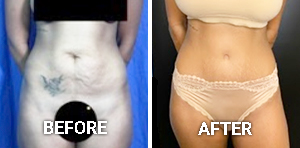The rhinoplasty, colloquially known as a nose job, is one of the most popular plastic surgery procedures. It involves reshaping the nose and bringing it into balance with the rest of the face. Typically, the surgeon reduces the size of the nose and refines certain areas for a more aesthetically pleasing appearance.
If you’re seeking rhinoplasty to improve the appearance, keep reading to learn more about this popular procedure. Read about how Dr. Michael Omidi, a top expert in rhinoplasty, goes about the procedure.
Contents
Why People Get Rhinoplasties
Some people who seek a rhinoplasty have suffered from facial trauma that results in a deviated septum or a crooked nose. Others may be seeking to correct a congenital deviated septum. These cases can either be treated with a septoplasty (surgery on the nasal septum) or a combined septorhinoplasty (surgery on the septum and nose as a whole), depending on the severity of the abnormality. If the reason for the surgery is to fix an abnormality or injury that affects breathing, insurance will often cover some or all of the procedure.
The majority of people seek rhinoplasty because they are unhappy with the appearance of their nose. They have either always felt self-conscious about the nose they were born with or do not like how it has aged. Rhinoplasty can create a more youthful appearance, enhance facial symmetry, as well as boost self-confidence and career success.
There are also several medical reasons that may drive someone to seek rhinoplasty. It can correct birth defects (congenital deviation), treat breathing problems, reduce snoring, repair an injured/broken nose, and revise a previous nasal surgery that was not performed well.
How Do I Make Sure I Get The Nose I Want?
Plastic surgery is a big decision that should not be rushed. That’s why Dr. Omidi takes the time to talk with his patients about their goals and expectations. Scheduling a simple consultation is the first step in this process.
You will discuss your needs and desired results with your doctor. They will spend as much time as is necessary to evaluate your needs and determine which approach is best for you. Your doctor will also evaluate your current nasal structures to better understand your needs and to be able to recommend the right approach.
It is important to know that not all faces are the same. This means that while one type of nose looks nice on one person’s face, that doesn’t necessarily mean it will be the right nose for your face. The idea that you can have any type of nose you want is unrealistic, and your doctor will discuss this with you.
Dr. Omidi takes a thoughtful approach to rhinoplasty. Instead of having you choose from a booklet of noses (which is not the right way to go about it), he will discuss with you the type of shapes that would go best with your facial structure. It is important to consider the cheekbones, chin, forehead, brow bones, and jawline when evaluating the face for rhinoplasty.
There is no one size fits all. However, if you have a specific vision that you want to achieve, Dr. Omidi will work with you to get as close to it as possible. If you desire a specific look that may not be possible with rhinoplasty alone, he will discuss with you the possibility of combining the procedure with another, such as a chin implant, augmentation of the cheeks or lips, or skin tightening.
Types of Rhinoplasty
There are actually two types of rhinoplasty: open and closed. An open rhinoplasty calls for an incision under the nasal tip (between the nostrils) and lifts the skin of the nose to operate on the bone and cartilage underneath. Essentially, the surgeon ‘opens’ your nose up via the skin flap on top – sounds scary, but you’ll be in great hands.
A closed rhinoplasty involves incisions made inside the nose only. This means that the incision (and subsequent scar) is made inside of the nostrils and will not be visible. This type is less invasive than the open procedure and has a shorter recovery period.
You may have also heard of a procedure called ‘ethnic rhinoplasty’. This procedure aims to give people a chance of improving their appearance without changing or losing the uniqueness of their ethnicity. Your doctor will be understanding of your cultural background and standards of beauty. They will not try to mold you with a cookie-cutter appearance, rather their goal is to help you achieve your own definition of beauty.
People of different ethnicities may need different approaches. Skin thickness and strength, the shape of nasal cartilages and nostril size, and cultural norms of appearance all vary among different ethnicities. In addition, people with darker skin are at higher risk for keloid scarring and hyperpigmentation, therefore the surgeon will typically use different types of sutures (possibly even skin glue) to seal the incisions.
What Should I Expect?
Rhinoplasty is an outpatient procedure, meaning you will be able to go home that same day. You’ll have to stay in bed with your head elevated for the first day after the surgery. Swelling and bruising will appear immediately after the procedure – this is normal. After a week, you will be able to resume normal activities but avoid contact sports and strenuous activities for at least 3 weeks.
You will follow up with your doctor to ensure proper healing and to address any concerns you may have. If you are experiencing any pain or discomfort, Dr. Omidi can prescribe medications for relief. The bruising tends to resolve after 6 weeks; swelling may persist for longer. The full recovery takes up to a year. Your newfound confidence will last forever.





